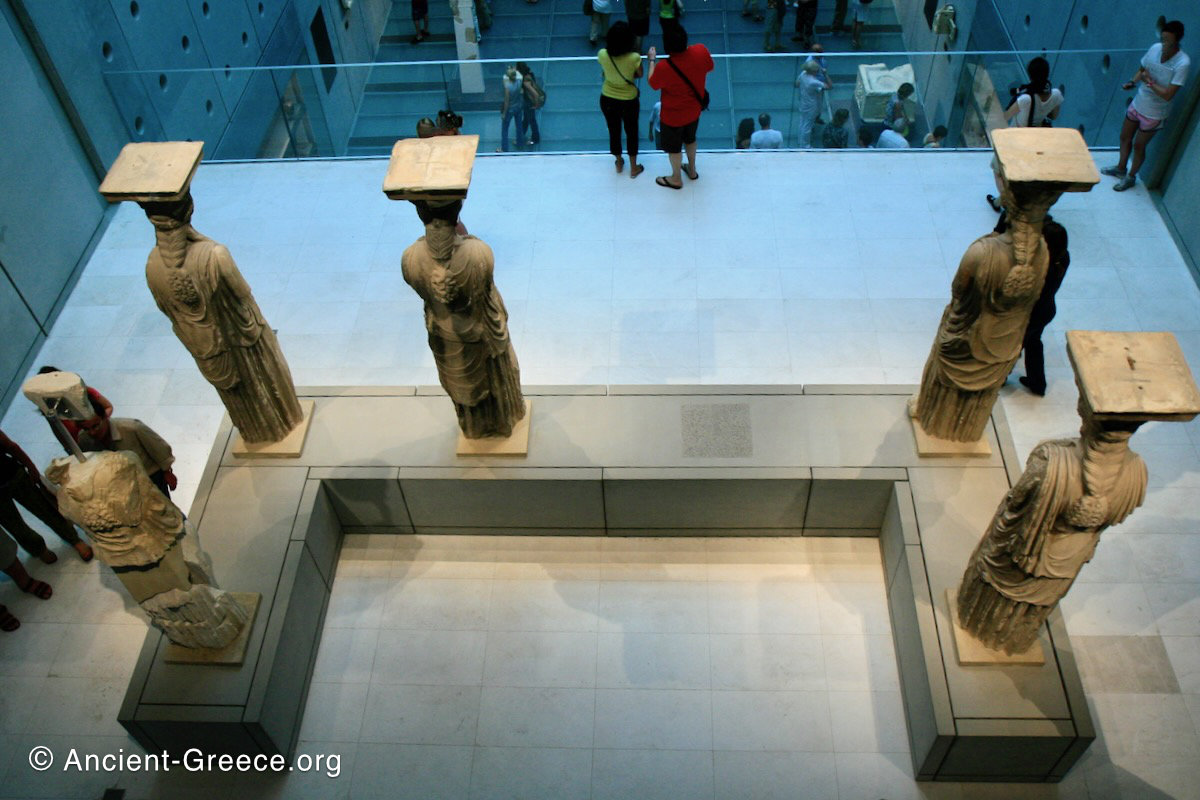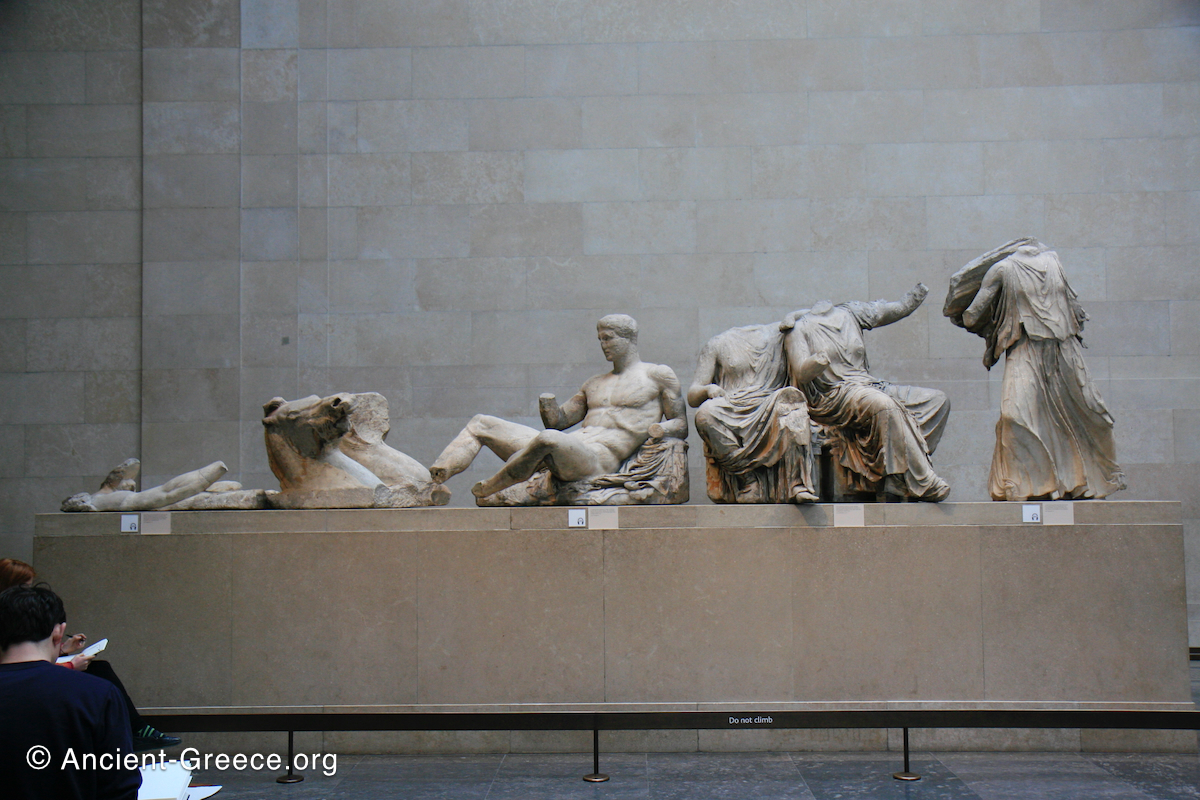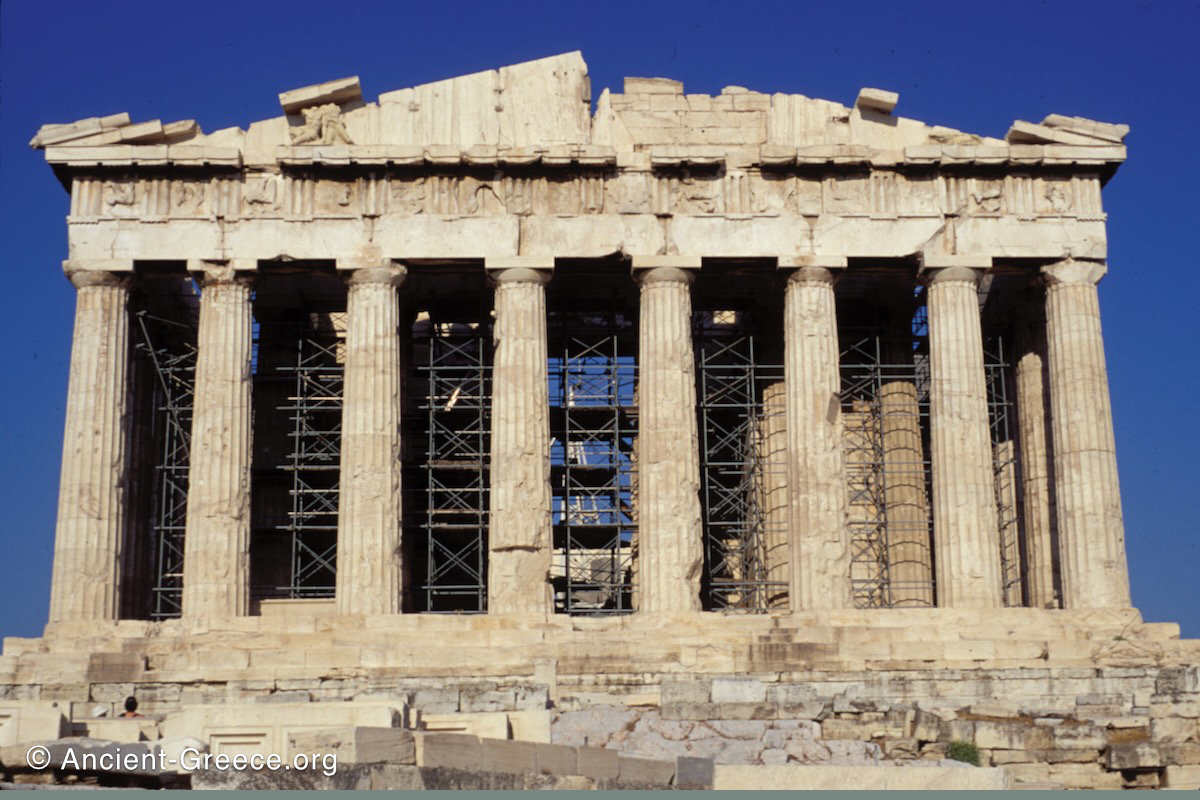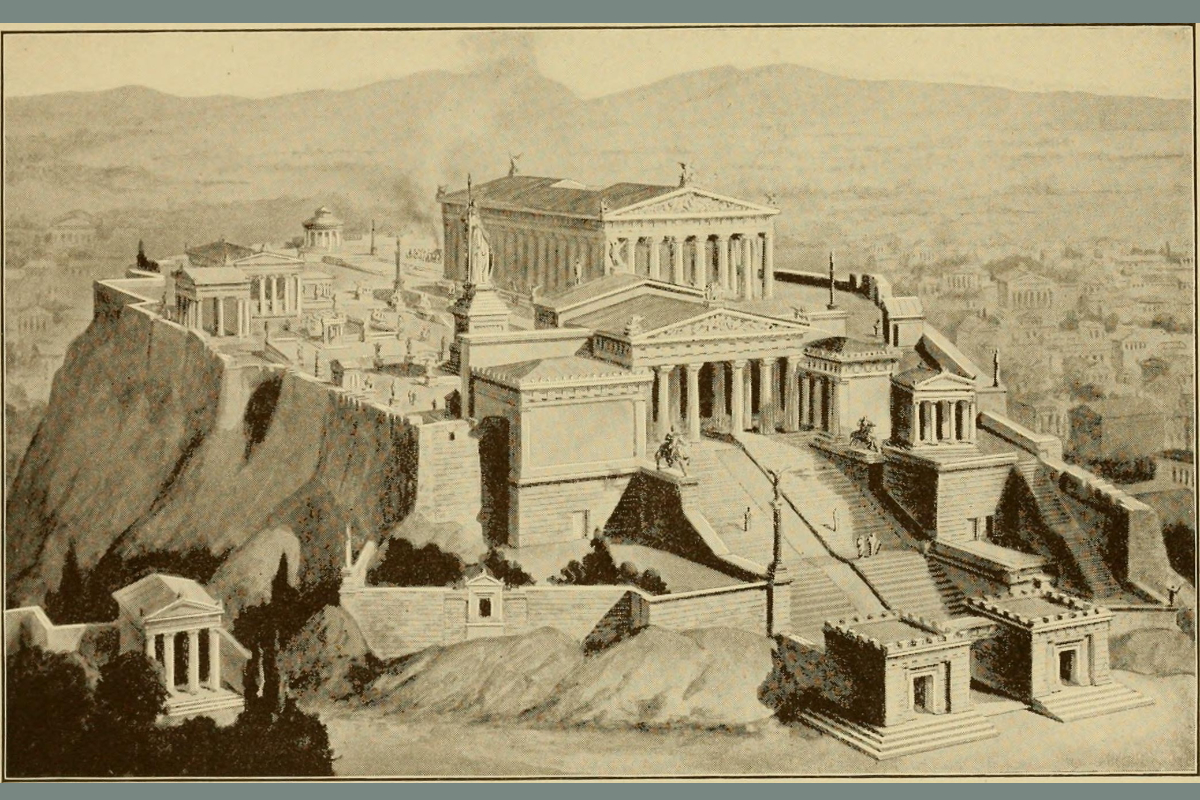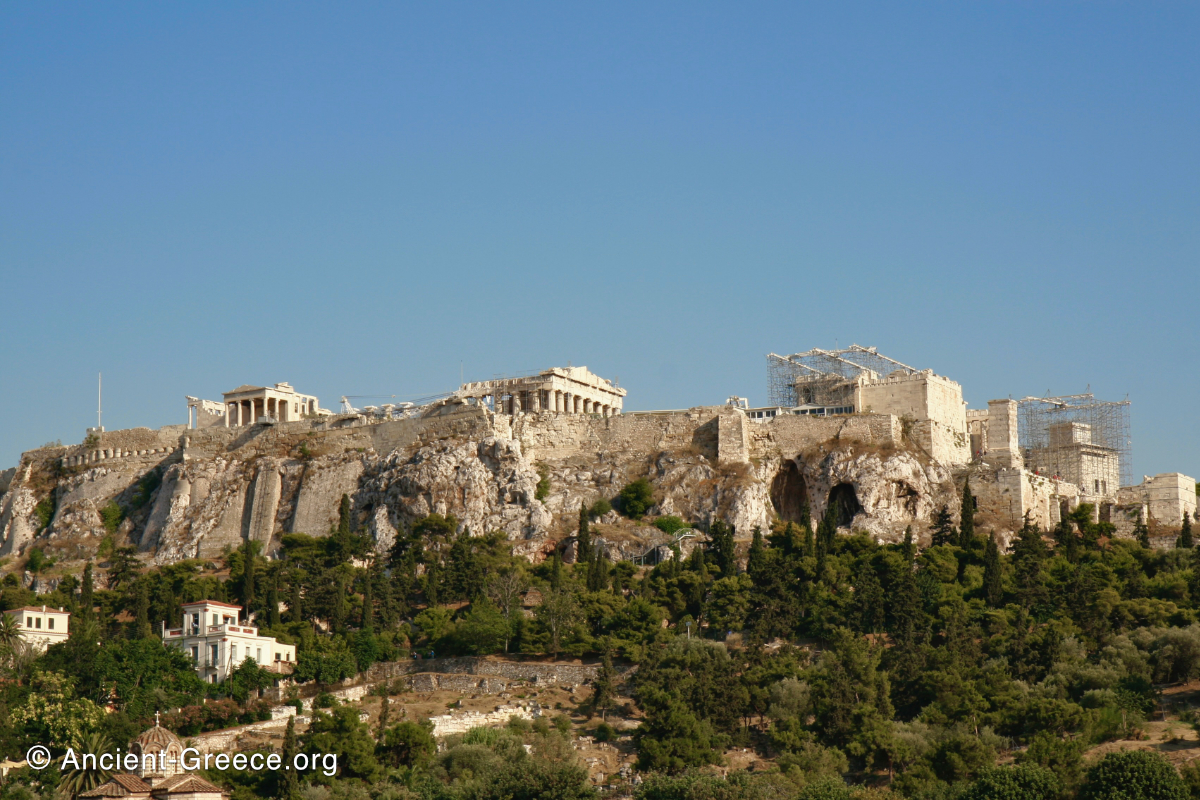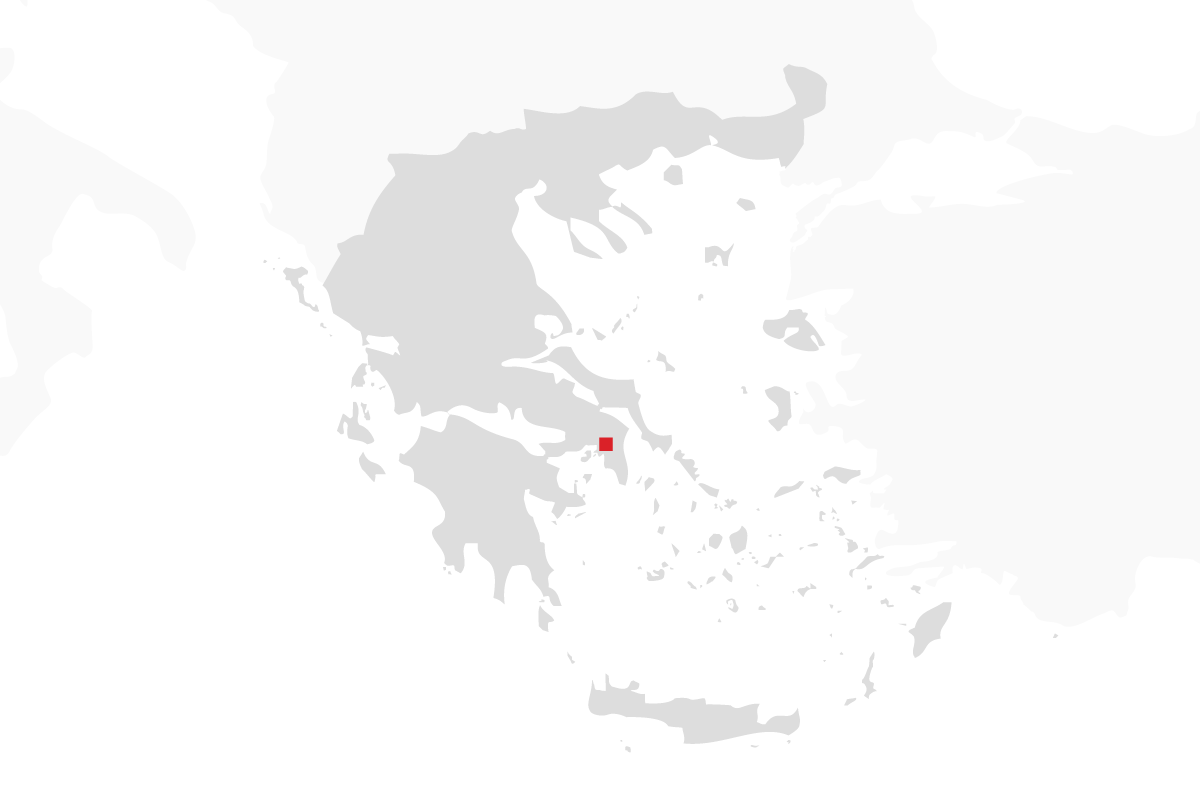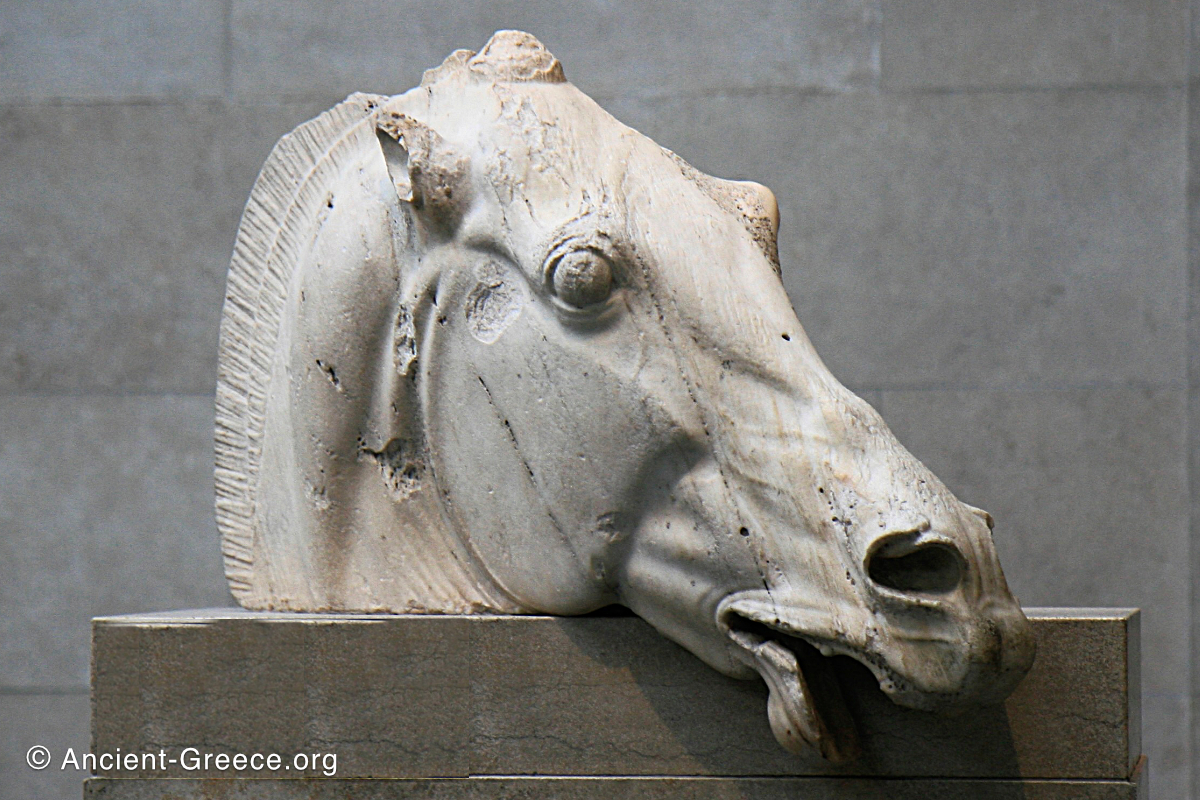
On this page:
The Parthenon’s exterior was adorned with an abundance of sculptures.
Above, and on the outer side of the colonnade we find the traditional Doric frieze that was decorated with alternating metopes and triglyphs.
The exterior wall of the cella on the other hand has a continuous Ionic frieze–typically found in Ionic temples. The pediments of the Parthenon were decorated with elaborate marble statues dedicated to mythological aspects of Athena.
The sculptures of the pediments (aetomata) were monumental in size and were arranged in dynamic compositions that filled the triangular spaces above the east and west facades, visually illustrating two stories involving the goddess Athena. The only record of their arrangement in situ comes to us from the accounts of Pausanias and several drawing made by Jacques Carrey in 1674.
The Parthenon’s main function was to provide shelter for the cult statue of Athena.
Chryselephantine statue of Athena
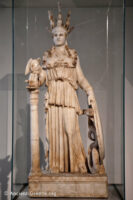
As a temple, the Parthenon’s main function was to provide shelter for the cult statue of the goddess. In the parthenon’s case, the cult statue was a monumental chryselephantine (made of gold and ivory) statue of Athena, created by Pheidias and dedicated in 438 BCE. The statue stood approximately 9 or 11 meters (around 40 ft.) tall. It has not survived to our day, but we have enough accounts of its existence along with a number of smaller marble copies.
Athena stands holding a Nike (Victory) on her right hand that extends forward from the elbow, as if offering Nike to the Athenian citizens. With her left hand she supports her shield which shelters a snake as it rests on the ground, and her lance that rests on her left shoulder.She is dressed with an Attica peplos, and on her head she wears a richly decorated helmet with a sphinx at the apex and two Pegasi on each side. Her breastplate is adorned with snakes and the head of Medusa at the center.
The statue was a hollow construction with a wooden armature that supported the outer surfaces of the golden drapery, and the ivory flesh of Athena. The statue was situated close to the south end of the cella and was surrounded by a procession of double-decked Doric columns on its flanks as well as the back. The floor of the cella in front of it was a shallow pool of water or oil, which added further drama to the statue’s context with its reflective surface.
Parthenon East Pediment
The east pediment represented the birth of Athena.
According to Greek mythology Zeus gave birth to Athena after a terrible headache prompted him to summon Hephaestus’ (the god of fire and the forge) assistance. To alleviate the pain he ordered Hephaestus to strike him with his forging hummer, and when he did, Zeus’ head split open and out popped the goddess Athena in full armor. The sculptural arrangement depicts the moment of Athena’s birth.
The birth of Athena took place at dawn, and this precise chronology is depicted by the heads of the horses that appear at the south corner of the pediment.
Read more about the Parthenon Pediments…
Parthenon West Pediment
The west pediment faced the Propylaia and depicted the contest between Athena and Poseidon during their competition for the honor of becoming the city’s patron.
Athena and Poseidon appear at the center of the composition, diverging from one another in strong diagonal forms with the goddess holding the olive tree and the god of the sea raising his trident to strike the earth. At their flanks they are framed by two active groups of horses pulling chariots, while a crowd of legendary personalities from Athenian mythology fills the space out to the acute corners of the pediment.
Read more about the Parthenon Pediments…
The Parthenon Frieze
The Parthenon frieze, is a group of relief sculptures created specifically to decorate the perimeter of the exterior wall of the Parthenon’s cella. It is 1 meter high and 160 meters long.
The sculptures are executed in low relief and depict the people of Athens in two processions that begin at the southwest corner and parade in opposite directions until they converge over the door of the cella at the east end of the Parthenon.
Almost certainly it represents the Panathenaic procession that was a central celebration in Athens during Classical times.
Read more about the Parthenon Frieze…
Parthenon Metopes
The Parthenon metopes that were visible on the exterior of the temple were made in deep relief and surrounded the temple on all sides. Most Greek temples had few decorated metopes, but in the Parthenon all ninety-two metopes were decorated on all sides with scenes from Greek mythology.
Read more about the Parthenon Metopes…
Athena Promachos
Athena Promachos was an immense statue of Athena that was placed on the Acropolis, to be encountered first as one entered through the Propylaia.
The colossal bronze statue is lost to us, but we have descriptions from ancient times to know that it was the creation of Pheidias, and that it was so large that ships approaching the coast of Attica could see Athena’s spear.
It stood on the Acropolis until the late 5th c. CE when it was moved to the forum of Constantine in Constantinople, the capital of the Byzantine Empire. It was subsequently taken apart by rioters in 1203 CE.

























